Expand your teaching through travel.
- Classroom Resources
- NGSS Storylines
- NGSS Storylines?? to Storylines!!
- Why Storylines Rock!
- Privacy Policy
- Terms & Services
- Affiliate Disclaimer

Adventure in the Classroom: Travel-Inspired Lesson Plan Format
- Posted by - Alyssa Weisenstein
- on - October 6, 2019
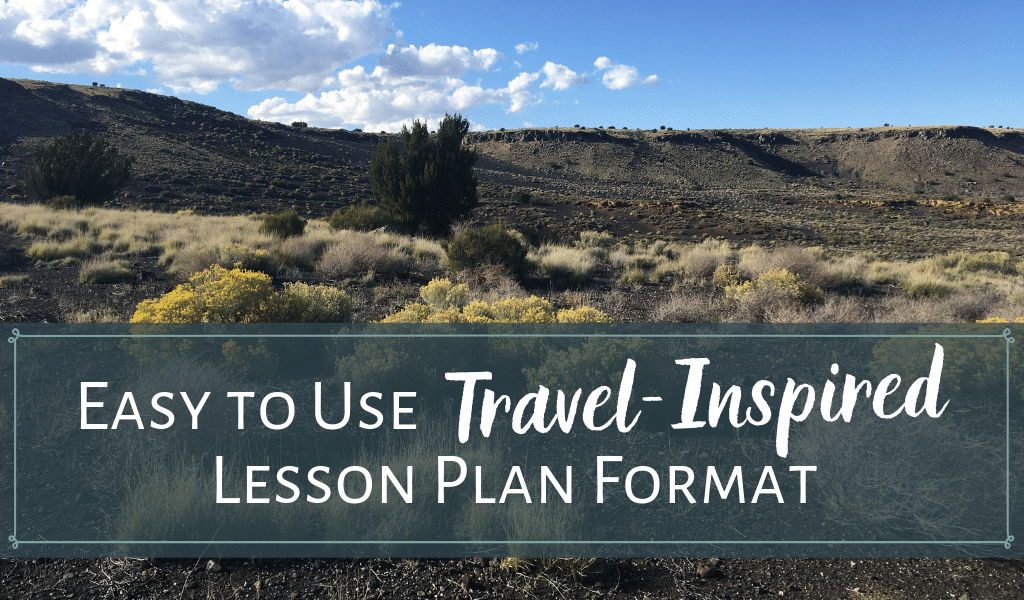
The volcanoes unit is one of my favorites to teach. Student buy-in is high because volcanoes are cool, but they have misconceptions that need to be debunked. How can I expect students to connect and truly understand concepts that are physically so far removed from them? Since I can’t bring them to the locations, the adventure has to start in the classroom. Follow this lesson plan format (with earth science examples!) to develop engaging travel-inspired learning.
During a volcano monitoring activity, students (freshmen in Southern Illinois – very far from any volcanoes) analyze the seismic activity on Hawaii to determine if a volcano eruption alert should be issued. They get all rowdy as the seismic activity increases and shout, “It’s going to blow!” “People are going to die, watch out!” The thing is though, Hawaii is formed by shield volcanoes, quiet eruptions of slow-moving lava, not Pompeii-style eruptions. Their vision of volcanoes is colored by what they’ve seen in movies and video games. Most have never even seen a real volcano.

An activity is not enough for students to fully visualize the environments where the content occurs. I’ll break down each step of the lesson plan format to develop engaging travel-inspired learning. Sections of the volcanoes unit will be used as examples throughout, but these are the same steps I follow for all units.
Goals of Travel-Inspired Learning
Student will:
- Create a connection to the content
- Envision processes and phenomena that occur throughout the world
- Develop as global citizens who acknowledge and respect different cultures
Getting Started
Don’t feel like you need to change an entire course or even unit to fit the destination-based learning model. Start by tying in a single lesson to a travel experience that really spoke to you. My destination-based lessons started with a simple two-minute story that connected to the content; it wasn’t part of an intentional planning process. I’ve developed the travel-inspired lesson plan format to help you transition to destination-based learning.
When you are passionate about what you’re teaching, students pick up on that. They’ll get a piece of the connection you’re sharing about your travel and how it connects to the content.
Exploration Passport
Each student has an Exploration Passport that they use for the entire course. Check out this article explaining Explorations Passports and for a FREE passport template. I do NOT let anyone take these out of the classroom. If they leave, you know they’re going to end up left in a locker, in a friend’s mom’s car, and who knows what other random places.
Exploration Passports include a United States map and a world map, so students know where we’re “adventuring.” This addition was made after an alarming number of students couldn’t find states on a U.S. map (including Illinois – where we live).
The pages within the passport are used as exit slips, learning reflections, and students’ own travel dreams.
Lesson Plan Format : Step-by-Step
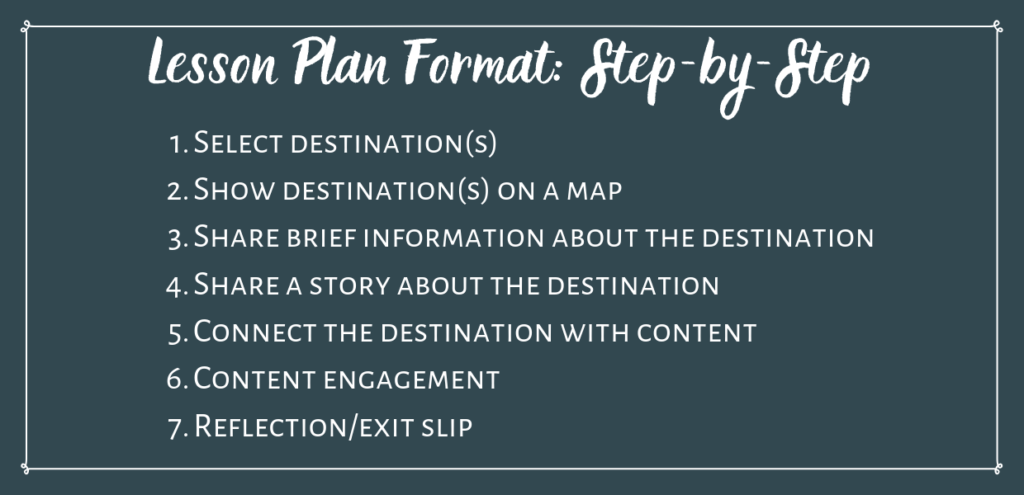
1. Select Destination(s)
You know your content and you know the travels you’ve loved the most. It’s okay to pick more than one destination that meets the needs of the current concepts. Try to stick to one-to-three destinations, otherwise the presentation becomes too overwhelming and jumbled.
Start your lesson by sharing the adventure destinations for the day. Pictures, a short video, or a quick story are a great introduction. Try to use your own materials when possible. Have a selfie on location? Students enjoy seeing pictures of you at the destinations and you know how they love selfies. Now, students are hooked to your lesson and they’ll be engaged when you tie in the content.
Volcano Example: Hawaiian Islands – Shield volcanoes Sunset Crater Volcano National Monument in Arizona – Cinder cone volcano Eyjafjallajӧkull* in Iceland – Composite volcano (also called strato volcano) *No, I cannot pronounce the name of that volcano. This Icelandic person can though.
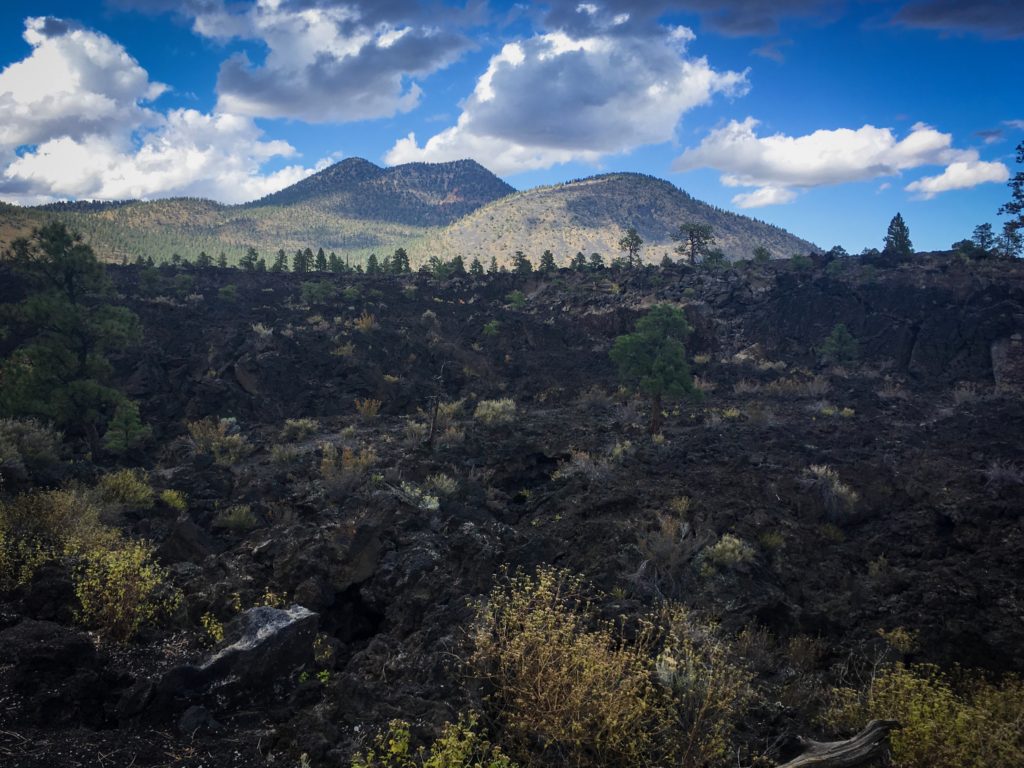
2. Show Destination(s) on the Map
Can you locate all 50 states on a U.S. map? Take a minute and try it out on this online quiz . How did you do? Too many high school students struggle with geography. I could no longer sit idly by and observe the geography illiteracy at the high school.
Show the U.S. and/or world maps with the locations, so students are oriented with your destinations. Encourage students to identify and mark the locations on their Exploration Passport maps.
Volcano Example:

3. Destination Information
Share brief information about the destinations with your students. This isn’t quite the time for content, but cultural information. I teach science, but I also have a responsibility for students to become well-rounded global citizens. I want people to be excited to learn about different areas of the world and the people who make those spaces unique.
Information Ideas
- Popular foods
- Popular activities
Volcano Example: Hawaii is the only state to have two official languages: English and Hawaiian. Although Iceland has the word Ice in the name, there is a lot of beautiful green space. Iceland has over 10,000 waterfalls. Arizona is not just a desert! Some areas of Arizona have mountains that are high enough in elevation to have annual snowfall. The average annual snowfall of Flagstaff is about 100 inches.
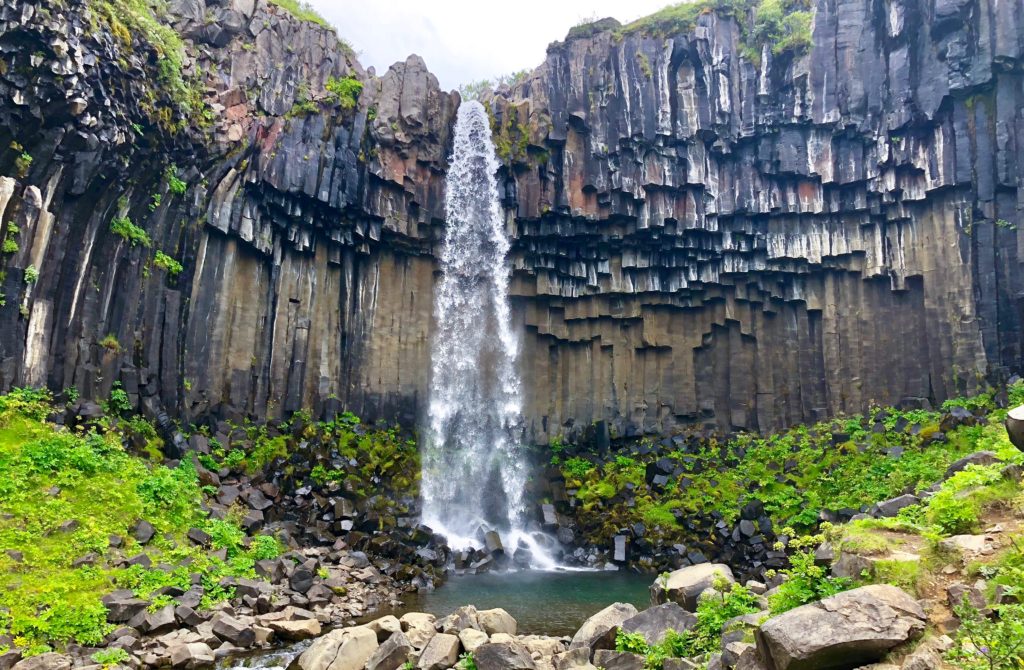
4. Share a Story
If you haven’t already, share a quick story about your experience at one of the destinations. Far off locations don’t seem real until you build a connection with them. You’re not sharing a novel here, so don’t sweat about it eating into your lesson time. Spending a moment engaging students will increase their overall learning better than more time can.
Volcano Example: Eyjafjallajӧkull last erupted in April 2010 over spring break and it released so much ash and dust that flights from Europe were grounded. A lady I worked with got stuck in Ireland for an extra week because she couldn’t fly out. “Shucks,” to being stuck on vacation for an extra week.
5. Connect with the Content
Now it’s time to connect your destinations to the content. I know there were several steps to get to this part, but by now your students are mesmerized by locations around the world and you have their attention. Quickly share with them where the lesson is headed.
Volcano Example: So, what do all of these locations have in common? They all were formed by volcanoes. However, volcanoes are not all the same. Some have violent eruptions, other quiet eruptions. Now, we’ll take a look at different types of volcanoes and how we can determine which type of volcano formed each destination.
This is the meat and potatoes of your lesson. The bulk of your time will be spent here diving into each of the concepts. Sometimes I finish the notes for a section in a day, other times it is spaced out over a week. You know your content better than anyone else, so you’ve got this part.
Volcano Example: You can access my exact unit slides! Teacher sharing is the best, so feel free to use them. COMING SOON!
7. Reflection/Exit Slip/Etc.
The final step of the lesson plan format is assessing students’ learning. It’s important for students to have time to process what they learned and share that information with you. I’d love to tell you I do this every day, but let’s be real, sometimes I’m just happy to make it through the hour unscathed. In all seriousness, we want to make sure our students are learning and quick formative assessments are a great way to do that. The strategy you select here does not really matter as long as you are doing something. Mix it up to keep students on their toes and play to different students’ strengths.
Ideas for Reflection/Exit Slip
- Students write answers to 2-3 main point questions
- One-word “what I learned”
- Draw images explaining a process
- Share something that surprised you or you didn’t know before
As you review students’ responses, quickly sort them into “got-it” or “not-quite” piles. Before starting the next day’s lesson, check-in with students who misunderstood a major concept.
Volcano Example: Check out the questions at the end of the volcano slides for the reflection questions. Students answer these questions in their Exploration Passports. I can look at them as students submit their passports or before the next class period. COMING SOON!
Pin it! Share it!
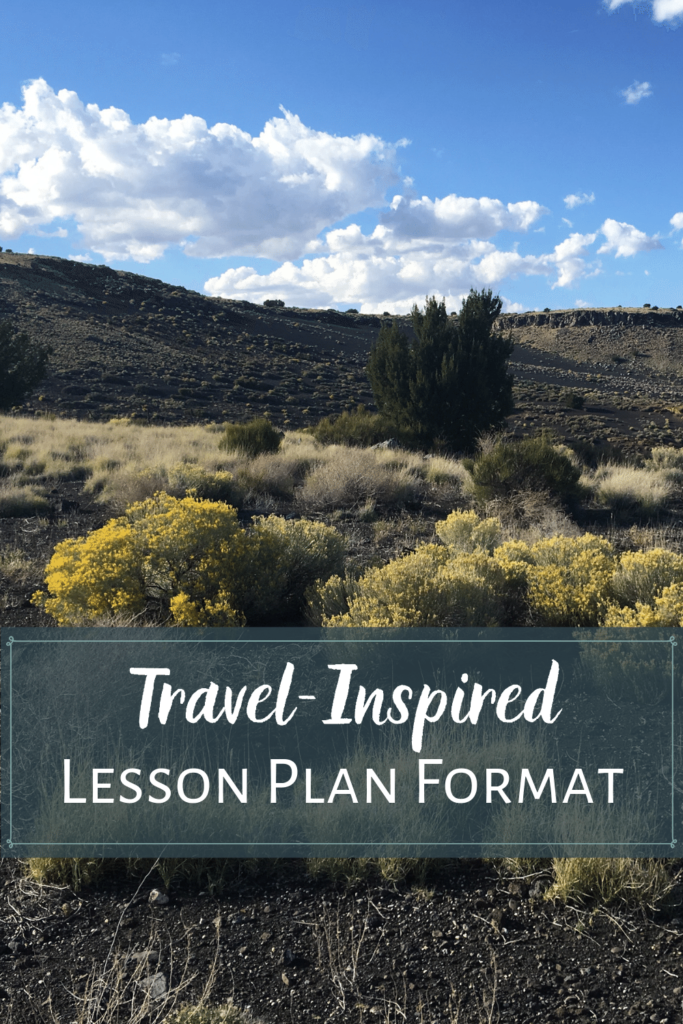
Alyssa Weisenstein
Leave a reply cancel reply.
Your email address will not be published. Required fields are marked *
ESL Activities
ESL Games, Activities, Lesson Plans, Jobs & More
in Icebreakers + Warm-Ups · Listening · Reading · Speaking · Writing
Travel & Holidays ESL Games, Worksheets | ESL Travel Activities
If you need some fresh, new ideas for the ESL travel and holiday unit that you can find in most textbooks, then you’re in the right place. We’ll share our top ideas for games and activities, along with travel vocabulary, worksheets and lesson plans. Let’s get to the best ESL holiday activities.

ESL holiday and travel-themed activities
Let’s get into everything you need to know for an ESL holiday lesson. Keep on reading!
ESL Travel and Holiday Activities
Here are the top ESL travel activities that you may want to try out with your students.
#1: Plan a Trip
Have your students plan a dream vacation in English! Instead of researching in their first language, use Google in English. In order to practice writing, keep notes only in English. Here’s an example of how you might plan your trip using English. You can have your students add as little, or as much detail as you’d like. However, the point of the activity is to practice writing in point form which is useful when writing outlines for tests or essays.
Day 1: Monday, January 1
Fly Seoul (3pm) —-> Vancouver (7am) Check in Hotel ABC, 123 Avenue Rest, relax
Day 2: Tuesday, January 2
Stay Hotel ABC Tour Stanley Park Eat Pub XYZ dinner
Day 3: Wednesday, January 3
Check out Hotel ABC Rent car Budget 123 Drive Whistler Rent skis shop ABC Go Skiing Lunch ski lodge Check in Hotel ABC Whistler Bed early
Procedure for one of my favourite ESL travel activities:
- Give students time to do some Internet research about a place they want to go. It’s helpful to specify the number of days. I generally make a rule that they must do this research in English. Suggest some helpful websites where they might like to start (Trip Advisor, Air BnB, etc.).
- Students can make a day-by-day itinerary of what they’re trip is going to look like.
- They can share about their trip with the class or turn it in for a graded assignment.

- Amazon Kindle Edition
- Bolen, Jackie (Author)
- English (Publication Language)
- 78 Pages - 03/22/2021 (Publication Date)
#2: A-Z Alphabet Game
If you know that your students already know a fair bit about holiday and travel, you may want to try this quick warm-up game. Or, you could consider using it as a review game at the end of a class.
The way it works is that students, in pairs or small groups write down the alphabet on a piece of paper. Then, they have to think of one travel related word for each letter. It doesn’t have to be done in order. For example:
P: Passport
The winner is the team with the most completed letters at the end of the allotted time. Do you want to find out more? Check this out: A-Z Alphabet Game ESL .
#3: Travel Word Association
This is nice ESL activity to do if you know that your students have studied about travel and holidays before. They can shout out vocabulary words related to this and you can make a mind map or sorts on the board. Group similar things together. For example, articles of clothing.
Find out more about this quick ESL warmer right here: ESL Vocabulary Word Association.
#4: Postcards ESOL Travel Activity
If you can get your hands on some cheap postcards or have some laying around your house or teacher’s office, try out this fun writing activity. It may just be the novelty factor, but students seem to love it. This activity is ideal for working on common greetings, the past tense (more ideas here: ESL past tense games ), and using descriptive words, as well as using synonyms to avoid repetition.
Distribute the postcards to the students. You can do one per student, or put the students into pairs. They have to look at the picture on the front of the postcard and imagine that they went on this vacation. Then, they can write about their trip to a friend or family member.
Next, the students trade postcards with another student or group. After reading them, they can write a response back of at least a few sentences. Finally, you may want to display them around the class as they’re colourful and fun and other students may enjoy reading them! Have some fun with this ESOL travel activity.
- Give each student or pair a postcard. They look at the picture and imagine what they did on that vacation, and then pretend that they’re writing to a friend or family member.
- Exchange postcards and another student or group have to write a response to what they read.
- Display the postcards around your classroom (optional).
#5: Travel or Holiday Videos
I’m ALL about using videos with my ESL/EFL students. They’re fun, engaging and a nice way to grab student’s attention and introduce a topic. Of course, you can base an entire class around one too if you design the activities well.
If you want to find out more about using them in your classes and some activities and games to do with them, you’ll want to check this out: Using Videos for Teaching English .
#6: Dictogloss ESOL Travel Activity
This is a challenging activity that works on listening and writing skills. Find a short story related to holiday or travel. It could even be a description of your own vacation that you took recently.
Then, you read out the story to your students in a way that is a bit challenging for them to catch every word. Students have to take notes and then try to reconstruct what they heard based on their notes in small groups. You can read it again so that students have a chance to make some additions or corrections. Finally, students compare their version with the original.
Do you want to try it out with your students? You can learn more about one of the best ESL travel activities here: ESL Dictogloss Activity .
#7: Holidays ESL Lesson Plan
It’s easy to plan an ESL lesson about any topic, including holidays. Check out this video for the steps to follow:
#8: Yes/No Questions and Answers
If you think about it, holidays and travel lend themselves to a ton of yes/no questions. For example:
- Did you fly or drive?
- Did you eat some delicious things?
- Was the food good?
- Did you have nice weather?
If you want to see some activities or games to work on these kinds of questions, you’ll want to check this out: Yes/No Activities and Games.

- 211 Pages - 07/12/2020 (Publication Date)
#9: ESL Food Activities and Games
I’m not sure if it’s the same for you, but when I travel, it’s ALL about the food. I want to try all the delicious things where I’m staying! The good news is that I have a ton of fun, interactive games and activities for food. You can easily adapt most of them to focus on holidays.
You can find out more details here: ESL Food Activities.
#10: ESL Surveys
I love to use surveys in my classes because they lend themselves to just about any topic. In the case of travel, they’re ideal for working on the present perfect and simple past together.
For example:
Have you ever travelled to another country?
Where did you go?
If you want to know more about how to design and use surveys in your classes for an ESL travel lesson, then you’ll want to check this out: Surveys for ESL Students.

ESL Travel Games and Activities
I also love to use ESL surveys to get students to express an opinion in English.
#11: Present Perfect Activities Related to Travel
The present perfect is often used to talk about vacations, travel and holidays. For example:
- Have you ever been to another country?
- Have you travelled to ______ before?
In order to incorporate this grammatical construction into some of your lesson, you’ll want to check this out: Present Perfect ESL Activities.
#12: Brochure Scanning
This is an excellent travel activity! You’ll have to get your hands on some travel brochures first. The way it works is that students get tons of practice with a reading sub-skill (scanning) because they have to look quickly through the brochures to find specific bits of information. For example, cost or number or days.
Do you want to try out this reading activity? You can find out all the details here: Brochure Scanning Reading Activity for ESL .
#13: Odd One Out ESL Warmer
This is a quick English warm-up activity that you can try out with your students. The way it works is that you write words, in groups of 4 on the board. 3 are similar and 1 is the odd one out. Students have to choose this one and say why it doesn’t fit. For example:
Bathing suit, sunglasses, boots, flip-flops
Answers: Boots because it’s not for a beach vacation. I accept many different answers as long as students support it well.
You can learn more about this ESL warm-up here: Odd One Out for ESL .

- 112 Pages - 10/24/2019 (Publication Date)
#14: Would you Rather?
I’m sure you’ve done this before with friends. You have to choose between two negative things, or two positive things. For example, how you want to die, or what you want to eat. In this case, students could choose between two types of vacation. For example:
Would you rather have a beach or forest vacation?
Would you rather stay in a big hotel, or an AirBNB?
Learn more about this nice activity for an ESL travel lesson here: ESL Would You Rather?

- 99 Pages - 06/22/2021 (Publication Date)
#15: Task Based Activity: Dream Vacation
I love to incorporate this style of teaching into my holiday lessons. It allows students more freedom to choose what they want to learn about and also builds opportunities for some serious teamwork.
In this case, I’ll have students work in groups of 2-3 to plan a dream vacation. They can do some research to find out all the details including how to get there, food, budget, where to stay, etc. Then, they either have to write a report and hand it in to me and/or do a short presentation to the class.
Need some more ideas for this style of a lesson? Check this out: Task-Based Learning .
#16: Travel Themed Charades
I love to play charades with my students. The way it works is that you can think of some travel-related phrases. For example:
- Flying on a plane
- Sleeping on a bus
- Eating noodles
- Buying souvenirs
Then, students have to act this out and their teammates have to guess what the phrase is. More details here: ESL Charades.
#17: Travel Journal
Encourage students to keep a travel journal for a fictional trip. They can describe their experiences, sights, and sounds, using new vocabulary.
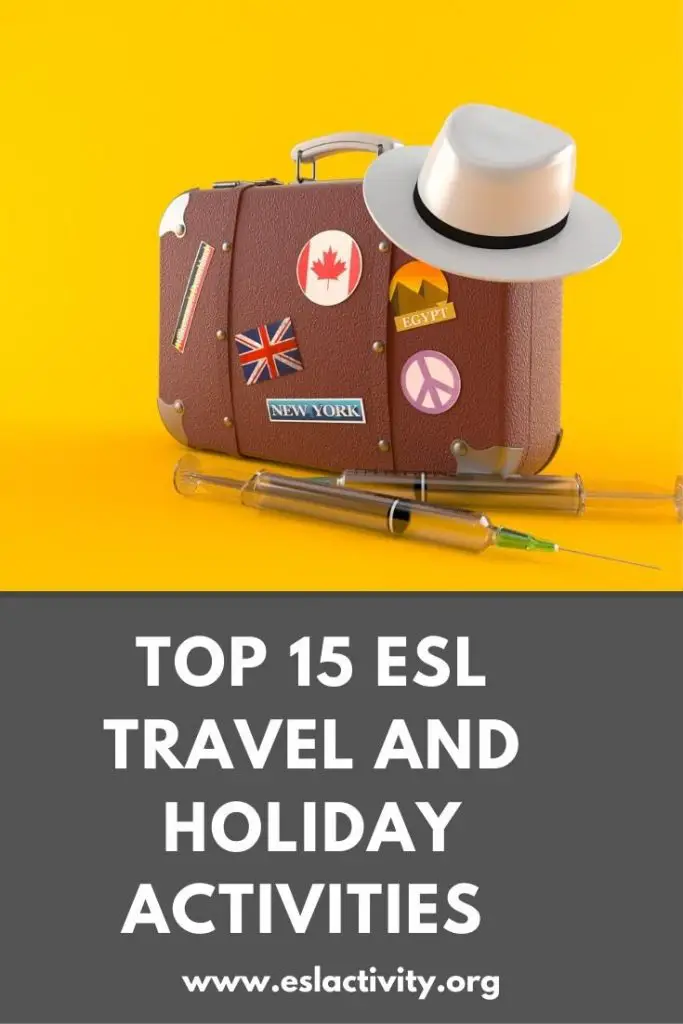
Travel and Holidays ESL
#18: Eliciting in an ESL Travel Lesson
Unless your students are absolute beginners, then it’s likely that they already know a good amount of travel and holiday vocabulary. That’s often why I like to start off my ESL traveling lesson by using some eliciting techniques. There are two main reasons for this.
The first reason is that it’s possible to find out what the students already know about this topic to avoid wasting class time covering these things. The second is that it helps students activate their prior knowledge about travel/holidays to make the new things they learn more memorable. Learn how to do this tactic for an ESL holiday lesson here:
ESL Eliciting Advice .
#19: Travel Listening Lesson
A nice way to talk about any topic is through a listening lesson. In this case, find a conversation between two people talking about an upcoming vacation plan. Or, someone talking about a favourite vacation from the past (it could even be you). Then, design an entire listening lesson around that. Find out how here:
#20: Idiom ESL Traveling Activity
There are lots of idioms related to holidays, travel and transportation. Here are just a few of them:
- All hands on deck
- To send flying
- Bump in the road
- Off the rails
- Train wreck
- Asleep at the wheel
- Fall off the wagon
- Hit the road
One of the best ways to make these idioms super memorable is to do this fun activity. Afterwards, your students will never forget! Learn more about this ESL activity:
Idiom Activity for Language Learners .
#21: Concentration ESL Traveling Vocabulary
One of the best ways to review new words during an ESL holiday or travel lesson is to play this memory game. Depending on the level of the students, make some matching pairs of cards with the following:
- Word/picture
- Word/definition
- Word/clue about the word
Then in small groups, students play the game to find the matches. Find out all the details about how to set it up and play:
ESL Concentration Game .
#22: Speaking Fluency Activity
To use this activity with a unit on holidays or travel, have students talk about a past, or upcoming vacation.
#23: Me Too!
Students have to make a true statement about themselves related to holidays and travelling. For example:
- I’ve been to Japan.
- I hate the beach.
- My family goes on a big vacation every summer.
If other students can agree, they stand up and say, “Me too!”
#24: Labour Day Guessing Game
#25: Holiday Interviews
Pair students and have them interview each other about their favorite holidays. They can then present their partner’s holiday to the class.
#26: Travel Bingo
Create bingo cards with images or words related to travel and holidays. Students mark off the squares as they learn new vocabulary.
#27: Travel-Themed Role-Plays
Set up role-plays where students act as travelers, airport staff, or hotel receptionists. This helps them practice common travel dialogues.
#28: Travel Vocabulary Pictionary
Play Pictionary using travel-related words. Students take turns drawing and guessing the vocabulary words.
#29: Travel Storytelling
Ask students to create and share short stories about a memorable travel experience they’ve had or wish to have in the future.
#30: Travel Debate
Have students debate the pros and cons of traveling. This encourages critical thinking and speaking skills.

Travel and Holiday Vocabulary
Here are some of the most common vocabulary words that you may want to teach your students related to traveling for an ESL holiday lesson.
- bathing suit
- boarding pass
- vaccination
- The months of the year in English
Do you have any ESL travelling vocabulary that you’d like us to add to the list? Leave a comment and let us know!
Travel Worksheets and Lesson Plans for ESL
If you’re looking for some worksheets or lesson plans related to holidays and travel, then you’ll want to check out some of our top resource recommendations:
ESOL Courses
ISL Collective
Lingua House
ESL Travel Vocabulary Worksheets
If you want students to get some practice with ESL travel vocab, here are a few recommendations:
English Club
Did you Like these Travel Games for ESL?
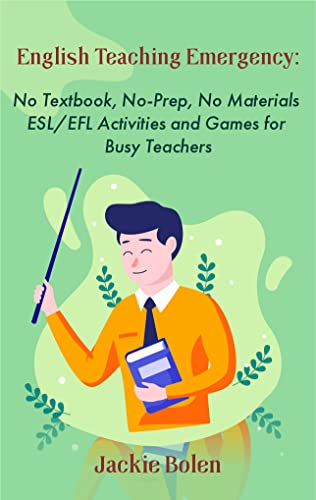
- 68 Pages - 11/12/2019 (Publication Date)
Yes? Thought so. Then you’re going to love this book: The Emergency English Teacher: No-Textbook, No-Prep, No-Materials ESL Activities.
If you’re always in need of last-minute activities and games for your classes, then this book is exactly what you might need. It’s English teaching made easy in a serious way.
You can get the book in digital or print formats. Take the e-version with you to your favourite coffee shop for lesson planning on the go. Or, keep a copy on the bookshelf in your office to use as a handy reference guide. But the best idea is to have it with you at all times for those English teaching emergencies.
Do you want to find out more? Head on over to Amazon to pick up your copy today:

FAQs about ESL Travel Lessons
There are a number of common questions that people have about teaching this unit. Here are the answers to some of the most popular ones.
What is the purpose of teaching the travel and holiday unit to English learners?
The purpose is to help English learners develop vocabulary, grammar, and conversational skills related to travel and holidays.
What topics can be covered within the travel and holiday unit?
Topics can include modes of transportation, booking accommodations, tourist attractions, holiday activities, travel phrases, and cultural aspects of different destinations.
How can I introduce vocabulary related to travel and holidays?
You can introduce vocabulary through visual aids, realia (actual objects), flashcards, and interactive activities such as matching games or vocabulary quizzes.
What grammar structures can be taught in the travel and holiday unit?
Grammar structures such as present simple for schedules and timetables, past simple for recounting travel experiences, future tenses for making travel plans, and modal verbs for expressing preferences or asking for permission can be taught.
What speaking activities can be used to practice travel and holiday-related topics?
Role-plays, group discussions about dream destinations, travel itineraries, or describing holiday experiences are effective speaking activities. Additionally, pair work activities like “Find Someone Who” or “Guess the Destination” can engage learners in conversation.
ESL Travel Activities and Games: Join the Conversation
What are your thoughts about these Holiday ESL activities? Do you have another one that you’d like to recommend to us? Leave a comment below and let us know what you think. We’d love to hear from you.
Also be sure to give this article a share on Facebook, Pinterest, or Twitter. It’ll help other busy English teachers, like yourself find this useful resource for ESOL travel lessons.
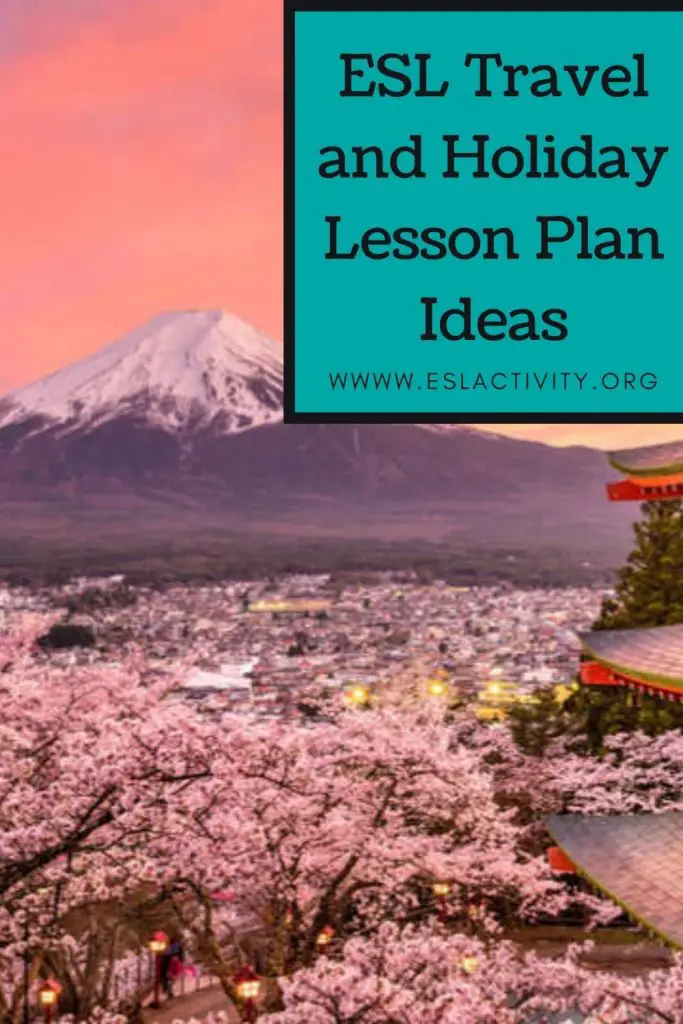
ESL Travel Lesson
Last update on 2022-07-17 / Affiliate links / Images from Amazon Product Advertising API
About Jackie
Jackie Bolen has been teaching English for more than 20 years to students in South Korea and Canada. She's taught all ages, levels and kinds of TEFL classes. She holds an MA degree, along with the Celta and Delta English teaching certifications.
Jackie is the author of more than 100 books for English teachers and English learners, including Business English Vocabulary Builder , 67 ESL Conversation Topics ,and 39 No-Prep/Low-Prep ESL Speaking Activities for Teenagers and Adults . She loves to share her ESL games, activities, teaching tips, and more with other teachers throughout the world.
You can find her on social media at: YouTube Facebook Instagram
Top Selling ESL Activity Book

As an Amazon Associate, I earn from qualifying purchases.
More ESL Activities and Games
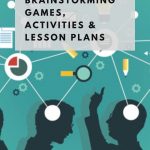
Brainstorming Games, Activities, Worksheets & Lesson Plans

Debate Topics: Funny, Silly, Controversial, Interesting and More!
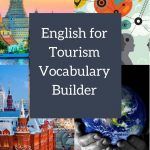
English for Tourism: Learn Vocabulary for Working in Tourism Industry
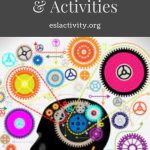
ESL Drill Activities and Games | Ideas for English Drilling Exercises
About, contact, privacy policy.
Best-selling author and English teacher Jackie Bolen has been talking ESL activities and games since 2015. The goal is to bring you the best ideas, lesson plans, and activity recommendations for your TEFL classes.
Get in touch: About + Contact
Privacy Policy and Terms of Use
Email: [email protected]
Address: 2436 Kelly Ave, Port Coquitlam, Canada

“The world is a book and those who do not travel read only one page.” Augustine of Hippo (354 – 430), theologian and philosopher
- April 8, 2021
- General English
Home » Travel
Latest lesson plans

LESSON OVERVIEW
This free ESL lesson plan on travel has been designed for adults and young adults at an intermediate (B1/B2) to advanced (C1/C2) level and should last around 45 to 60 minutes for one student.
Whether it’s exploring new places, or relaxing in familiar ones, everyone loves travelling. In fact, many people learning English are doing so for that exact reason. In the past, travelling to exotic locations was only for the super-rich. Now, with the expansion of budget airlines and cheap packages, the world is a lot more accessible to a lot more people. In this ESL lesson plan on travel, students will have the opportunity to discuss and express their opinions on issues such as how much they like travelling, the best places they have visited and different forms of travel.
This lesson plan could also be used with your students to debate these issues for World Tourism Day , which takes place in September. For more lesson plans on international days and important holidays, see the calendar of world days to plan your classes for these special occasions.
For advice on how to use this English lesson plan and other lesson plans on this site, see the guide for ESL teachers .
PRE-CLASS ACTIVITIES
Reading activity Before the English class, send the following article to the students and ask them to read it while making a list of any new vocabulary or phrases they find (explain any the students don’t understand in the class):
World of Wanderlust | The Top 25 Best Destinations in the World
The article provides descriptions of some of the most visited tourist destinations in the world. At the start of the class, hold a brief discussion about what the students thought about the article. Have the students visited any of these places? If so, what did they think about them? Which of the places on the list would they most like to visit and why? Can they think of any of the destinations that should not be on the list? Which other destinations should be on a list of the best destinations in the world?
Video activity To save time in class for the conversation activities, the English teacher can ask the students to watch the video below and answer the listening questions in Section 3 of the lesson plan at home. There are intermediate listening questions and advanced listening questions so teachers can decide which would be more appropriate for their students. Check the answers in the class.
The video for this class is called “The Point of Travel” by The School of Life which views travel as a kind of therapy that can help us with our emotional state of mind.
IN-CLASS ACTIVITIES
The focus in the class is on conversation in order to help improve students’ fluency and confidence when speaking in English as well as boosting their vocabulary.
This lesson opens with a short discussion about the article the students read before the class. Next, the students can give their opinion on the quote at the beginning of the lesson plan – what they think the quote means and if they agree with it. This is followed by an initial discussion on the topic including the benefits of travel, the student’s favourite holiday/vacation and the best places to spend a holiday/vacation in their country.
After this, students will learn some vocabulary connected with travel such as backpacking , off the beaten path/track and bucket list . This vocabulary has been chosen to boost the students’ knowledge of less common vocabulary that could be useful for preparing for English exams like IELTS or TOEFL. The vocabulary is accompanied by a cloze activity and a speaking activity to test the students’ comprehension of these words. This may also be a good time to explain the difference between travel, trip and journey , as these words are often confused by students
If the students didn’t watch the video before the class, they can watch it after the vocabulary section and answer the listening questions. Before checking the answers, ask the students to give a brief summary of the video and what they thought about the content.
Finally, there is a more in-depth conversation about travel. In this speaking activity, students will talk about issues such as the different types of holiday/vacation people like to go on, how much they like to plan for a trip and the attraction of solo travel.
After the class, students will write about their opinion of travel. This could be a short paragraph or a longer piece of writing depending on what level the student is at. The writing activity is designed to allow students to practise and improve their grammar with the feedback from their teacher. For students who intend to take an international English exam such as IELTS or TOEFL, there is an alternative essay question to practise their essay-writing skills.
DOWNLOAD LESSON PLANS

Did you find this lesson plan useful?
Your English Pal is a free resource to help fellow ESL teachers save time when preparing their classes. If these lesson plans have helped you, and you’d like to help keep the site free, please consider making a small contribution to help cover the site’s costs. Any help you can give is much appreciated!
2 thoughts on “Travel”
Hi I donante 5 dollars I can not download the lesson plan travel c1 c2
Hi Elsa. Thank you very much for your donation! You can download the lesson plan by clicking the PDF images at the bottom of the page (one for teachers and one for students). It should open in the new page and then you can click the download arrow at the top right to save them to your computer. Let me know if that works
Leave a Comment Cancel Reply
Your email address will not be published. Required fields are marked *
Save my name, email, and website in this browser for the next time I comment.
Copyright © 2023 Your English Pal
Privacy Overview
Blog de Cristina
Digital tools and ideas to transform education, 8 engaging esl activities for teaching about travelling.
Engaging ideas and activities revolving about the topic of travelling coming right up!
These are some of the activities I have been doing with my upper-intermediate students. I thought I might share them with you, in case it saves you some time.

I have split the activities into two days as some of the activities in Day 2 require studying the vocabulary introduced in Day 1.
As my students are upper-intermediate, it is not the first time they study this popular topic. Therefore, to revise some of the words I thought they knew, I used the website Half a crossword.
Addicted to using technology in my class, as I have confessed time and again, I have used Genial.ly to create some flashcards. The flashcards were initially used in class and then shared with them to encourage revision outside the walls of the classroom.
The flashcards contain common collocations related to travelling, but some words are missing. Before flipping the card, students try to guess the hidden word(s). The initial letters are provided to make guessing easier for them.
Note: click on the 3 dots to enlarge the presentation.
Think about it: how many pictures are stored on our mobile phones? What could engage students more than talking about what is real for them, about their own experiences, about their own trips?
Ask students to take out their mobile phones and ask them to choose their favourite picture from their last holiday. Allow some minutes for this part. Ask students to work in pairs or threes. Ask them to show the picture to their partners, talking about it and sharing the story behind the picture. Encourage the use of the collocations in the exercise above.
This “flexible seating” strategy is quickly becoming one of my favourites to pair students with different partners. I explained the strategy here
For this exercise, I sellotaped to the back of the chairs of the classroom the phonetic transcription of the collocations studied in the flashcard activity. This way, I killed two birds with one stone, as the exercise helped me to revise the collocations and ensure they pronounced the words in the correct way. To transcribe the collocations, I used a website I have been using for years. Check it out here.
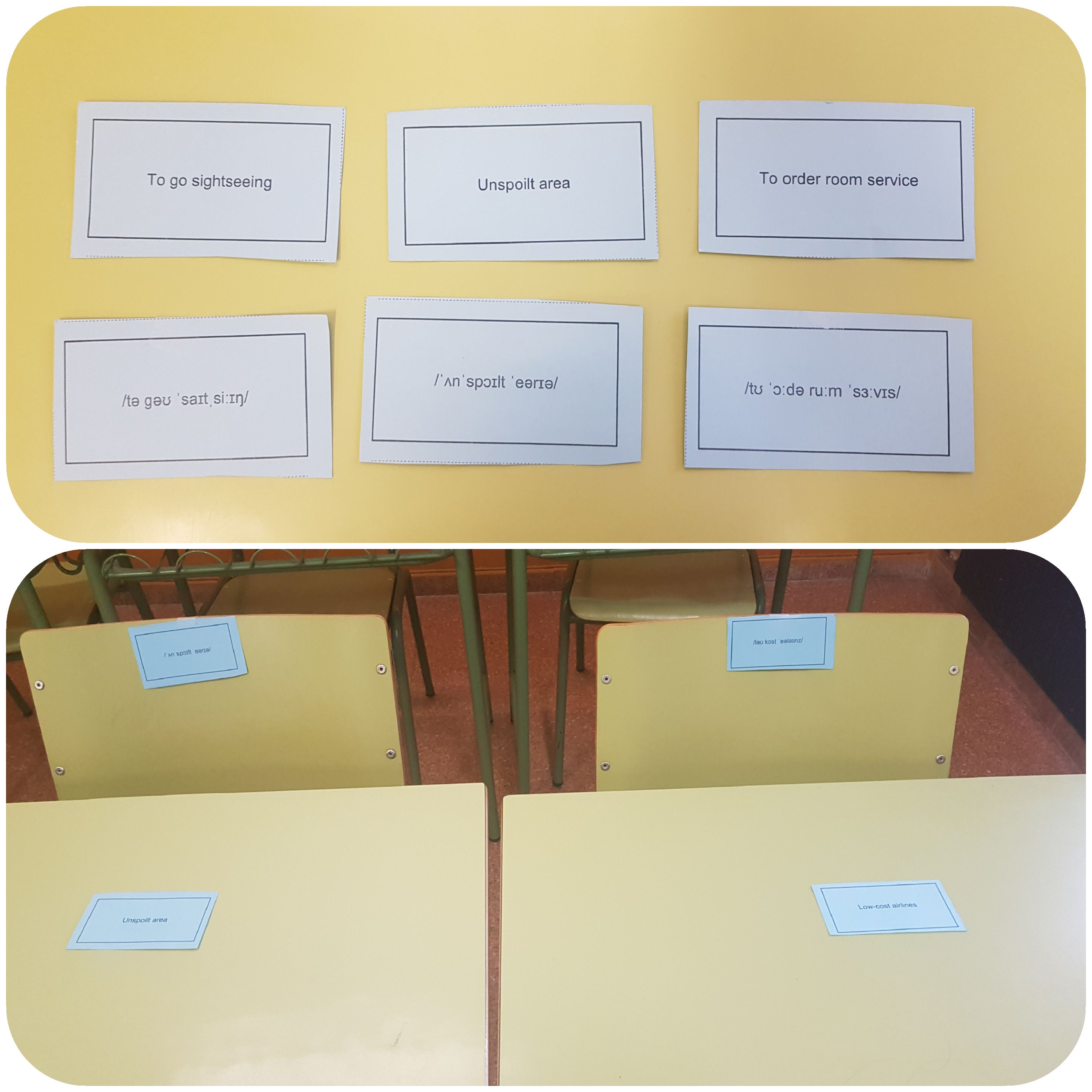
Using a presentation with some conversation questions I created on Spark Adobe some years ago, I asked my students to discuss the questions trying to use the collocations studied in Activity 4.
Every two questions, I gathered all the cards containing the collocations, shuffled them and redistributed them. This meant, standing up and finding the matching card with the corresponding pronunciation and then, sitting on that chair and talking to a different student.

Groups of 4 students. I displayed the first dilemma and asked students to pair up within the group and discuss for some minutes what they would do. Then, I asked them to share their ideas in their groups and finally, we had a whole-class discussion.
I created some posters using Canva.com and put them on the walls of the classroom. To form groups, I numbered them off and asked all number 1s to form a group, all number 2s to form a group, …etc. This way, I made sure they worked with different students.
Before the class, I put the 5 posters up on the walls of the class. Next to the posters, I also put 3 or 4 cards containing common collocations from Activity 4.
I instructed the groups to choose a poster and discuss the question in the poster, trying to use the vocabulary in the cards.
I did not set a time for each poster, I gave them the freedom to discuss as much as they wanted, but encouraged them to do at least three posters. I dedicated 25 minutes to this activity.
Posters here
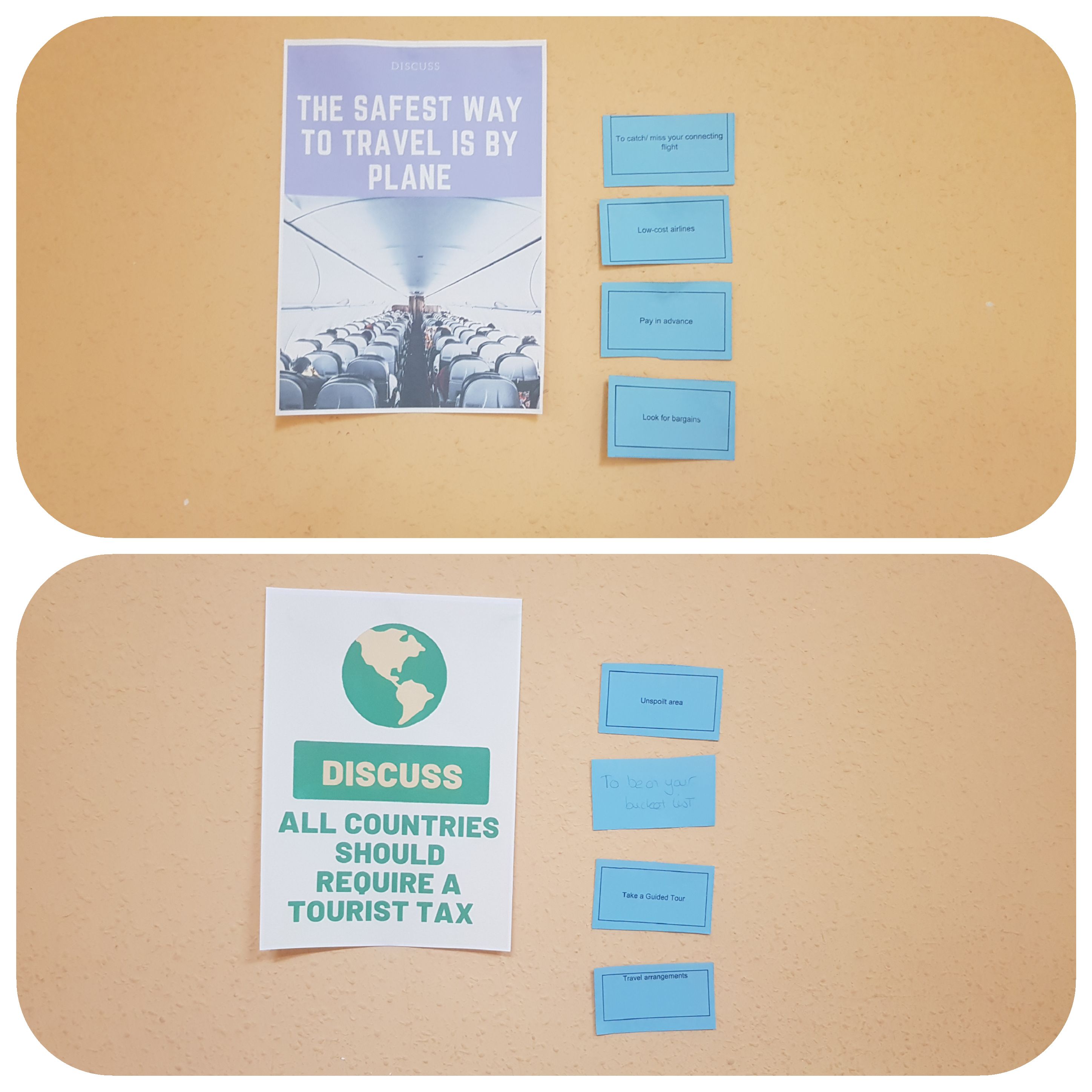
Giving your class a touch of modernity can’t get any easier. Ask your students to pick a city—any city in the world is at your fingertips-, and ask them to give a short speech about that city. Just open Google Maps, write the keywords in the search box, drag the Pegman and enjoy the virtual trip. For more details, click here
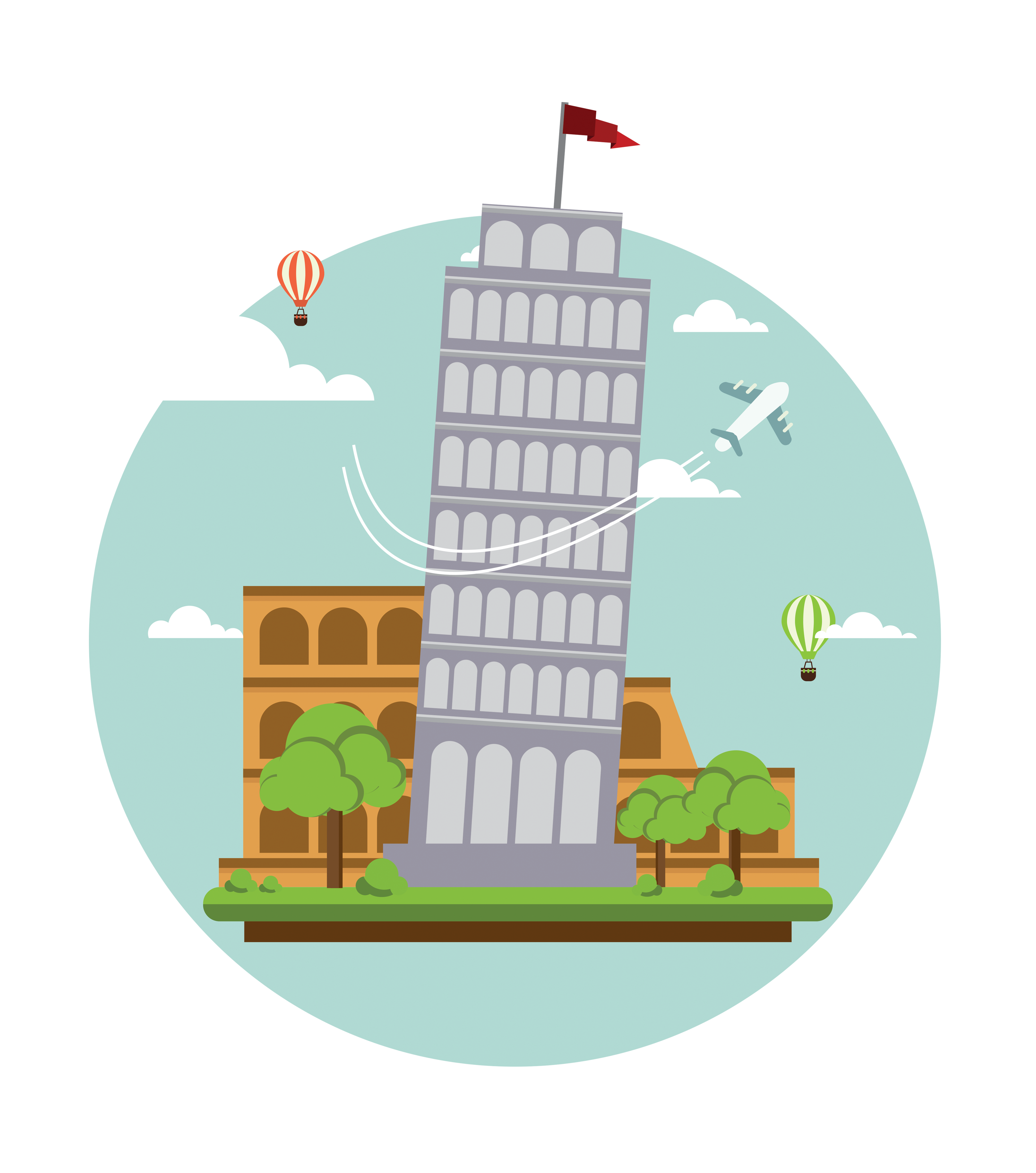
Related posts:

15 thoughts on “ 8 Engaging ESL Activities for Teaching about Travelling ”
Glad you find them useful!
Thanks, Cristina! You save my day! I’ve been struggling with warm-up activities that I can do with my intermediate students. And you gave me clues about that. Thank you so much!!
Glad you liked them!
Thank you for sharing your ideas. They are really helpful.
Thank you very useful and interesting ESL activities
Thanks. You’ve made my day!
You are amazing) Your work is fantastic! Thank you for sharing. Today you have inspired me to continue working and changing.
Thanks, Olga!!! Glad to have helped you!!
Christina!!! Thanks to your site I make my lessons the best in the world! It is perfect!
My advice?? One app at a time!! Once you master one, start with the next one!
Thanks Cristina for sharing everything… I´m learning to use all these apps to make my classes more interactive.. It’s driving me crazy hahaha… but I made it… I’ve already done a presentation with Adobe Spark and now I’m working on Genially.. uff.. hard work… thankssss
Hi Cristina, I did appreciate your tips. I teach English to Italian young learners, teenagers and adults and I really like the variety of tools you let students use as well as your teaching ideas in connection with technology. Congrats!
Yes. Seeing what other teachers are doing we can get better! Thanks for your comment!
Thank you very much Cristina! I always take inspiration from your lesson plans and I also love the tools that you use. Sharing is the best things that we, as teachers, can do!
Leave a Reply Cancel reply
Your e-mail address will not be published. Required fields are marked *
This site uses Akismet to reduce spam. Learn how your comment data is processed .

Teaching with Travel ESL Lesson Plans

The allure of travel is timeless. Stories of distant lands, unique customs, and thrilling adventures have always captured our imaginations. When incorporated into English as a Second Language instruction, the charm of travel comes alive, creating an immersive learning environment. And when you have a premier resource like English4Tutors providing meticulously crafted travel ESL lesson plans , the teaching and learning processes become much more effective and enjoyable. In this article, we delve deeper into the advantages of these lesson plans and how they elevate the ESL teaching experience.
The Distinctive Edge of the English4Tutors’ Offer
- Tailored Content: English4Tutors’ lesson plans aren’t just generalized templates. They’re the result of in-depth research and are designed by experts who deeply understand the diverse needs of ESL students. This ensures content is not only engaging but also pedagogically sound.
- Time-Efficiency: Time is a precious commodity for educators. With ready-made lesson plans from English4Tutors, teachers save significant prep time. This allows teachers to direct their energy toward student interaction and feedback, making lessons more personalized and impactful.
- Diverse Topics: The realm of travel is vast, and English4Tutors ensures this vastness is reflected in their lesson plans. From understanding travel etiquette in various countries to diving into the history of ancient landmarks, these lessons offer a vast choice of topics.
- Cultural Relevance: It’s not just about language proficiency; it’s about fostering global citizens. These lesson plans introduce students to cultural nuances, etiquettes, and a myriad of worldviews, ensuring a holistic learning experience.
Enhancing Classroom Dynamics
Introducing travel themes into the ESL classroom can dynamically transform student engagement. When lessons revolve around the excitement of exploring new destinations or understanding different cultures, students are more likely to participate actively and contribute to class discussions. This leads to a positive feedback loop where increased engagement leads to better understanding, which in turn fosters further engagement.
Seamless Integration with Existing Curriculums
One might wonder how these ready-made lesson plans fit into an already existing curriculum. The beauty of English4Tutors’ offerings lies in their flexibility. Teachers can effortlessly weave these travel-themed lessons into their current teaching modules, ensuring continuity in instruction while adding a fresh perspective.
Dynamic Learning through Real-World Scenarios
What’s travel without a bit of adventure? English4Tutors ensures that students get a taste of real-world travel challenges. Role-playing customs checks, booking hotel rooms, or resolving travel mishaps—these scenarios help students apply their language skills in realistic settings.
Staying Current with Global Trends
One significant benefit of using English4Tutors is their commitment to staying up to date. With the world of travel and global cultures constantly evolving, we regularly add new lesson plans. This ensures content remains fresh, topical, and in alignment with global developments.
Building Connections Beyond Borders
With these lesson plans, students aren’t just learning a language; they’re forging connections. They learn to understand different cultures, to empathize with people from diverse backgrounds, and to communicate effectively across cultural divides.
Unparalleled Support for Teachers
English4Tutors is not just a repository of lesson plans. It’s a platform dedicated to supporting teachers in their journey.
In Conclusion
In the dynamic world of ESL teaching, having resources that are both effective and engaging is paramount. English4Tutors’ travel lesson plans offer the perfect blend of academic rigor and captivating content. As educators leverage these resources, they’re not just teaching a language; they’re opening doors to the world for their students, making each lesson a journey filled with discovery, understanding, and growth.

Bicycle enthusiast and movie fan.
Always looking to improve something.
Similar topics

Common mistakes

Your student saying, “THEY are some apples on the table” or writing, “WHO’S book is this?” probably drives you up the wall, no matter how…

Lesson plans added in October 2024
In October we added 13 new lesson plans:Diamonds are foreverIn this Advanced ESL lesson, students will learn key vocabulary related to diamonds and discuss what makes diamond…

Lesson plans added last month
In September we added 17 new lesson plans:If you’re going to San Francisco… FREE PLANIn this lesson, the students will learn about the culture…

COMMENTS
If you need some fresh, new ideas for the ESL travel and holiday unit that you can find in most textbooks, then you’re in the right place. We’ll share our top ideas for games and activities, along with travel vocabulary, worksheets and lesson …
See our selection of lesson plans focusing on travelling and transport, and engage your English students in meaningful discussions.
This free ESL lesson plan on travel has been designed for adults and young adults at an intermediate (B1/B2) to advanced (C1/C2) level and should last around 45 to 60 minutes for one student. Whether it’s exploring …
Engaging ideas and activities revolving about the topic of travelling coming right up! These are some of the activities I have been doing with my upper-intermediate students. I thought I might share them with you, in …
Project-based learning is a fun and interesting way to enhance learning on any travel experience, whether it's while worldschooling, on a school trip, or even expanding ones' skills and knowledge on a personal or family …
These lesson plans introduce students to cultural nuances, etiquettes, and a myriad of worldviews, ensuring a holistic learning experience. Enhancing Classroom Dynamics. Introducing travel themes into the ESL …
This lesson offers a variety of activities based on British round-the-world travellers; a cyclist, a running granny and a teenage sailor. Task 1 is a warm up activity that introduces the topic, …